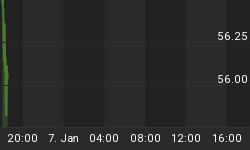My last article entitled "Peak Gold - Response to Critics" once again resulted in various emails on both sides of the debate as to whether global production of gold peaked back in 2001.
There was one response in particular which merits being added to the reasons given as to why the 5-year decline in global gold production is due to factors other than Peak Gold. Allow me to address it here.
Production is falling because of a change to lower grades of gold ore.
This is a practising known in mining as "low-grading". This involves mines switching to lower grade gold deposits when a higher price of gold makes them economic to produce. Conversely, when prices drop, the switch is made to higher-grade ores because the lower grade ores are no longer profitable to mine.
The implication of switching to lower grade ores is that production should drop because gold cannot be as quickly mined from such ores (less gold for the same amount of rock processed). In other words, a rising gold price should cause a drop in gold production and the converse that a drop in gold prices should cause a rise in gold production.
How can we best put this theory to the test? The best way is to plot the price of gold against global mine production over a suitable time period and split that plot into periods of a rising gold price and a falling gold price. We do this for the period 1970 to 2005 splitting the graph into seven discernible periods of significant gold price changes.

The gold price is the annual average price for the London Fix and the mine production figures are taken from the USGS. Now we tabulate the data with the predicted production for the period of gold going up or down against the actual production for each period.
| Year Range | Gold Price | Predicted Production | Actual Production |
| 1970-1980 | UP 1700% | DOWN | DOWN 21% |
| 1980-1985 | DOWN 50% | UP | UP 25% |
| 1985-1987 | UP 41% | DOWN | UP 8% |
| 1987-1992 | DOWN 23% | UP | UP 36% |
| 1992-1996 | UP 13% | DOWN | UP 1% |
| 1996-2001 | DOWN 30% | UP | UP 13% |
| 2001-2005 | UP 64% | DOWN | DOWN 6% |
The results are mixed with the prediction being right on five time periods but wrong on two of them. Nevertheless the fit is pretty good and I am making the one assumption that low-grade or high-grade mines can be rotated into production quickly within the time periods specified.
So where does that leave us in the Peak Gold debate? This current sustained decline in gold production (a phenomenon not seen since 1970-1975) could be attributed purely to "low-grading" and I am honest enough to say that.
What will have to happen to see either theory confirmed or denied? If it is Peak Gold then a sustained drop in the price of gold may increase production but not enough to bring us back to the levels of 2001. If it is "low-grading" then we may begin to flat line production as in the late 1970s and then rise again after the gold price blow off.
The caveat to that is the observation that 21 years of sustained low gold prices may have accelerated the depletion of high grade ores to such an extent that the next round of "high-grading" may be nothing more than "medium-grading" with its debilitating effects on world gold production. The big "elephant" finds are not being found in the numbers of former decades leading me to conclude that one should not so easily assume that the next sustained drop in the price of gold will take us above former production highs.
The problem here is that no one reading this probably wants to see a substantial drop in gold prices to put the theory to the test!
Roland Watson writes the investment newsletter The New Era Investor that can be purchased for an annual subscription of $99. To view a sample copy of the newsletter, please go to http://www.newerainvestor.com/ and click on the "View Sample Issue Here" link to the right.
Comments are invited by emailing the author at newerainvestor@yahoo.co.uk.
















